Envisioned as a “terminal in a garden,” this new addition to Kempegowda International Airport, Bengaluru (BLR) radically reimagines the airport experience. The construction of the 255,000-square-meter terminal marks a transformative moment for one of India’s largest and fastest-growing cities, Bengaluru, by creating a meaningful civic gateway that emphasizes Bengaluru’s rich culture and natural landscape. The design establishes a new vision for sustainable growth and conveys a sense of place that is unique to Bengaluru.
Transforming a Major Travel Hub
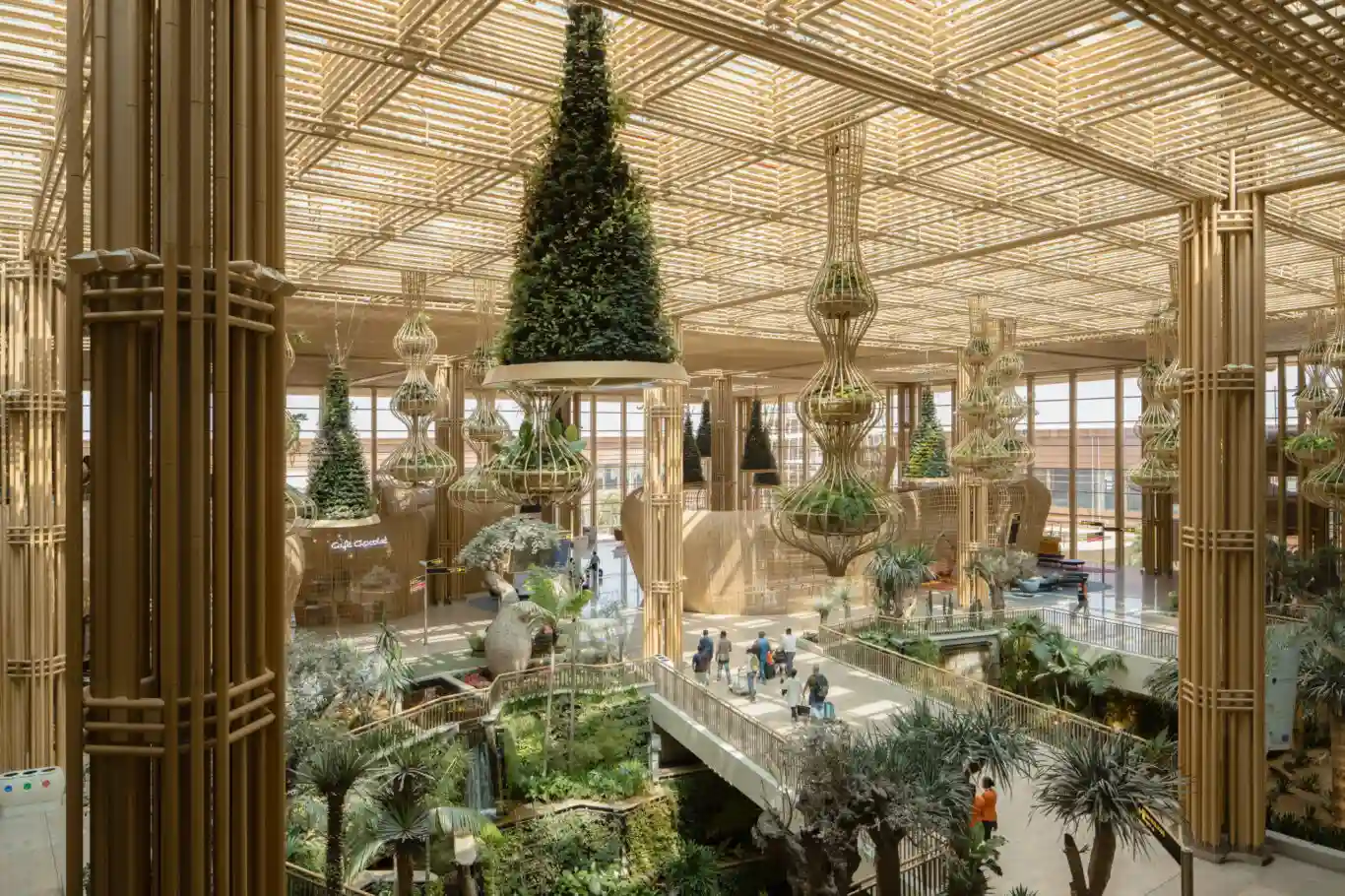
The new terminal offers a sequence of distinctive spaces, each integrated with a variety of landscape features, creating a calm oasis within the bustle of an international airport. By doubling the airport’s annual capacity from 25 million to 50 million passengers, Terminal 2 positions BLR as one of the premier airports in India and the world.
Introducing a new civic gateway
In the front of Terminal 2, a 123,000-square-meter multimodal transit hub serves as the nexus of public transport for the entire airport, connecting BLR with the city of Bengaluru. This T-shaped, two-level outdoor plaza space simplifies access to public transit. Along with a series of elevated pedestrian bridges, these spaces make the airport terminal area entirely walkable, bringing travelers over access roads to the two airport terminals and hotel.
The transit hub also introduces a new kind of space for an airport. With outdoor retail, event spaces, and entertainment areas, the space is envisioned as more than a travel hub—it is also a destination for local residents. The gardens inside Terminal 2 cascade out to the hub and its surrounding land, creating a continuous look and feel for these indoor-outdoor spaces.
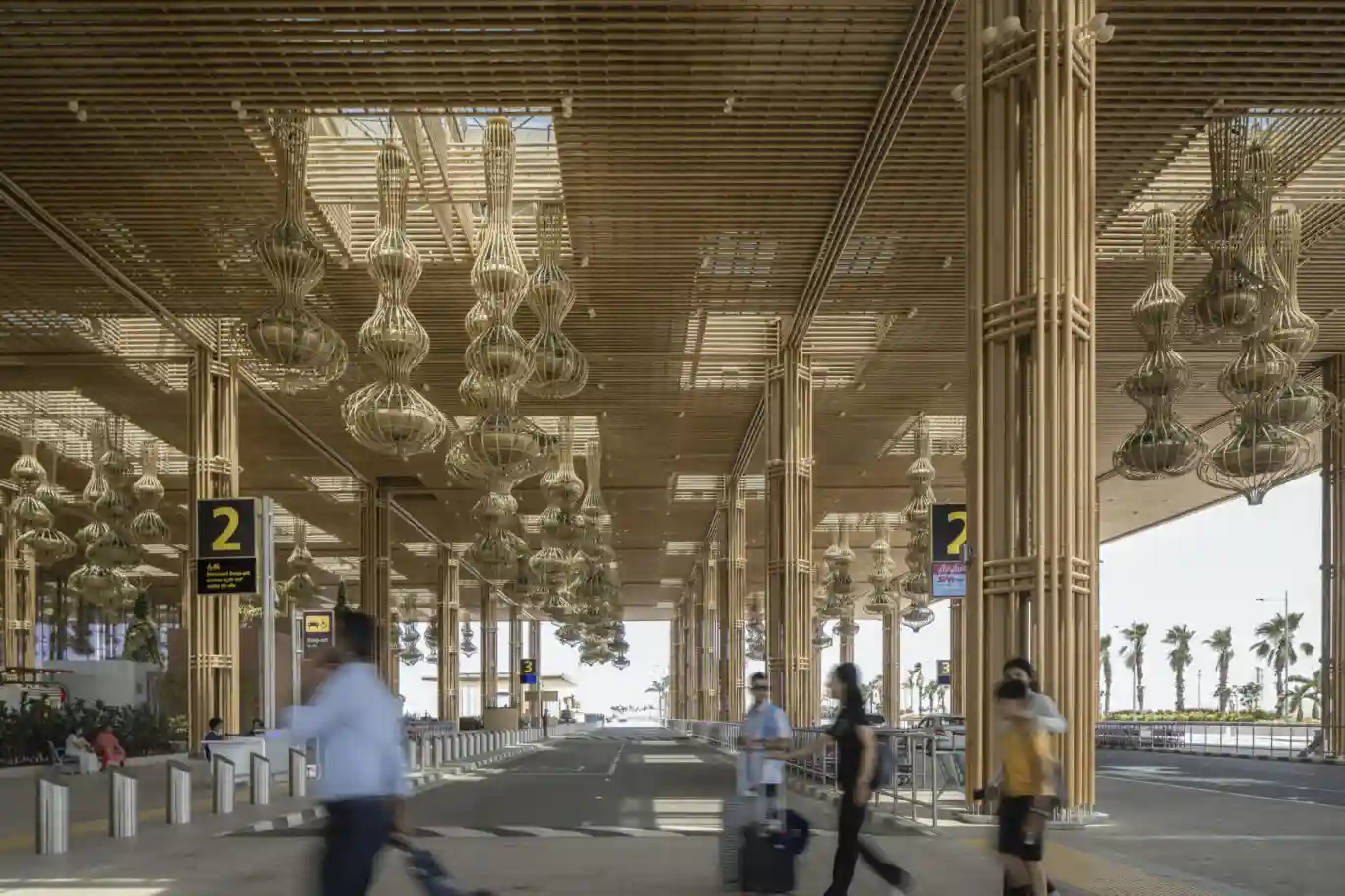
Once inside Kempegowda International Airport, the terminal building houses check-in, immigration, security, retail, arrivals, and baggage claim. Beyond security, separate retail and concessions spaces are provided for international and domestic passengers. Each area is replete with amenities and verdant plantings, in addition to a full array of shops and dining experiences.
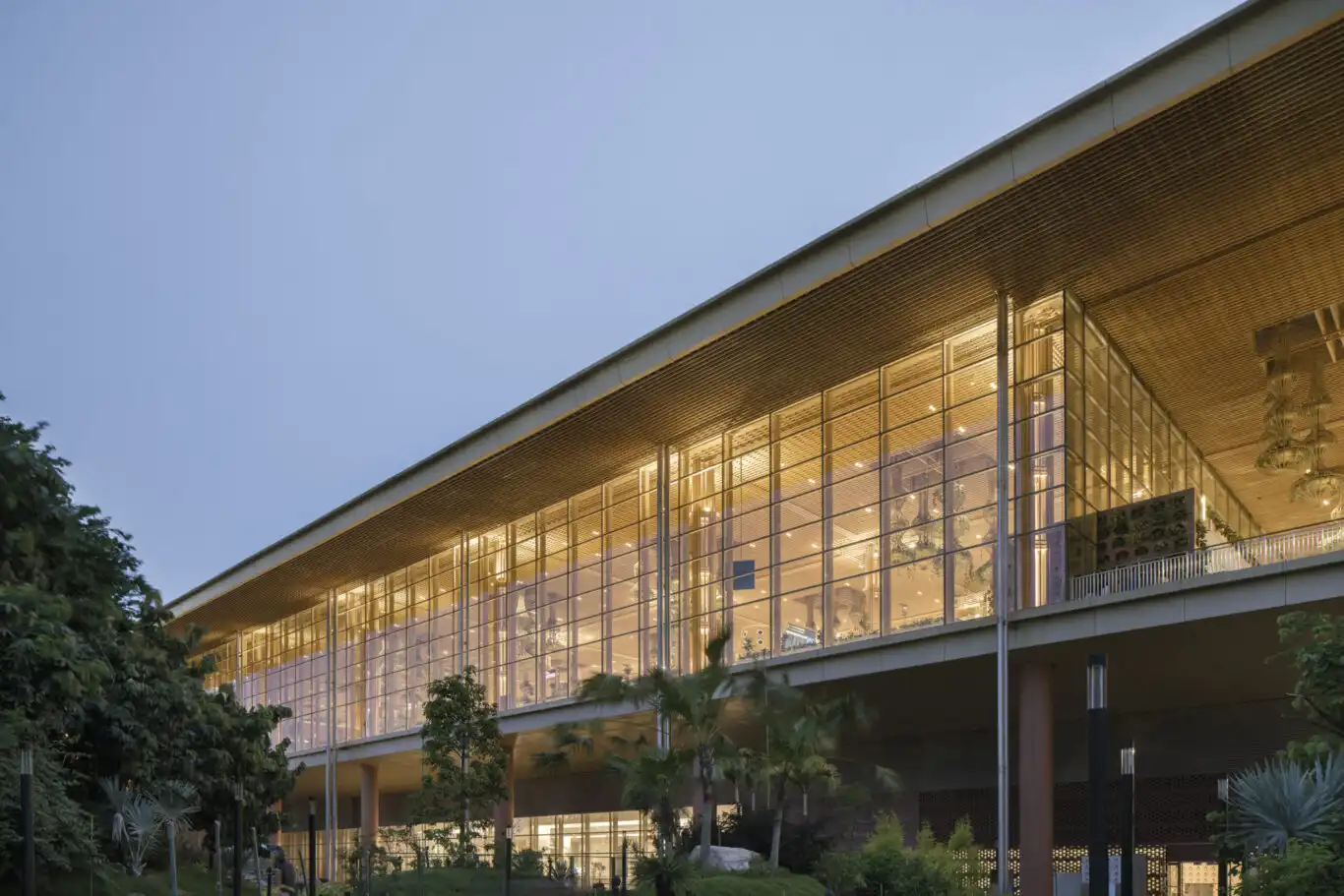
Connecting travelers to nature
Developed in collaboration with landscape architects Grant Associates and designers Abu Jani/Sandeep Khosla, SOM’s “terminal in a garden” connects travelers to nature. From the transit hub, through the terminal entrance, and extending to the gates, passengers move through a sequence of spaces marked by distinctive garden elements, including green walls and hanging gardens.
The ceiling, made of layers of cross-laid engineered bamboo, filters light much like a garden pavilion. The finishes throughout Terminal 2 make skillful use of locally sourced materials including ivory brown granite, umber red bricks, and traditionally woven rattan.
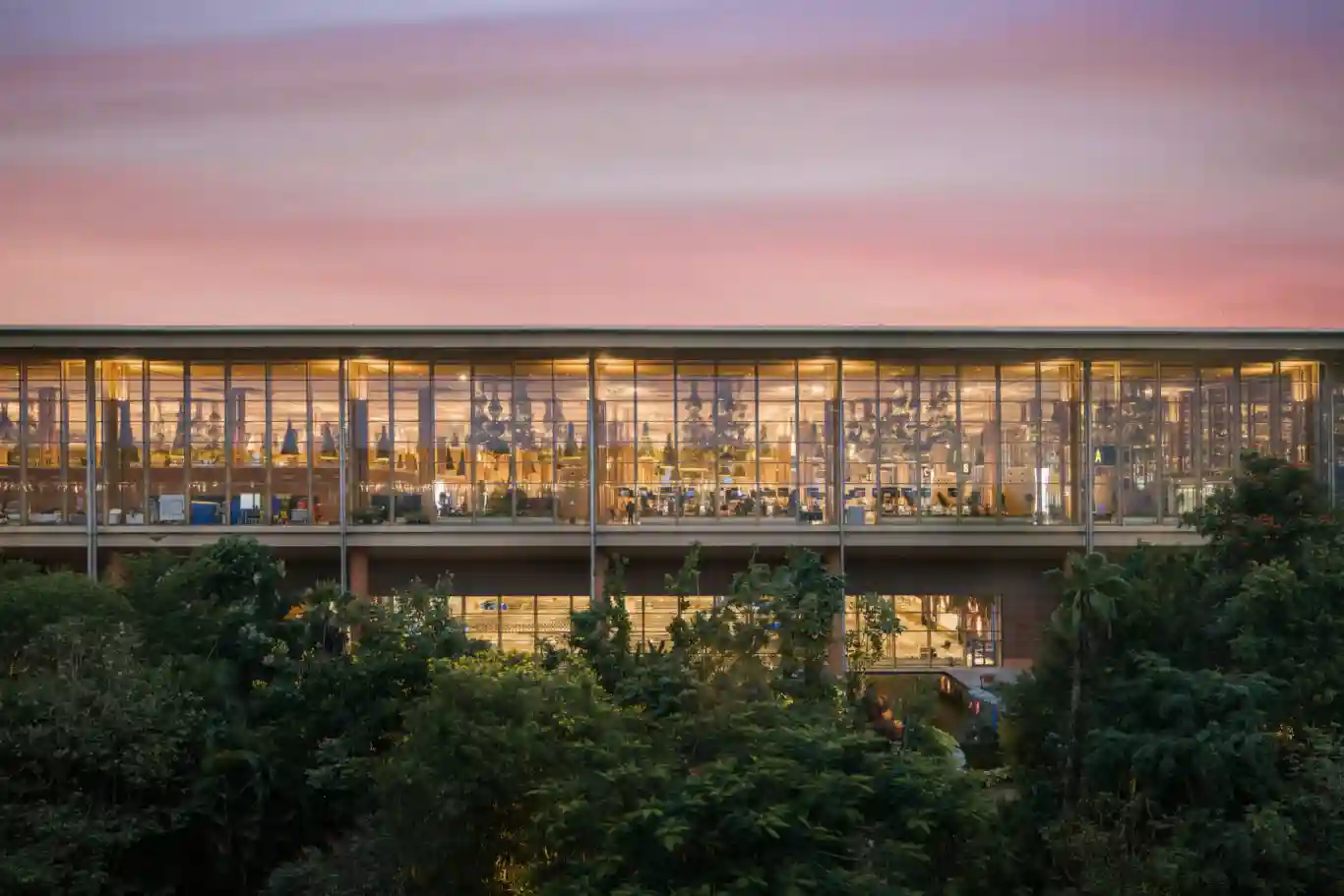
Between the gate concourses and the terminal building is the “forest belt”–a 90-meter-wide swath of lushly planted landscape. To reach the gates, passengers cross covered, open-air bridges, which provide a dramatic experience of immersion in the landscape. Footpaths within the forest belt provide access to dining concessions and other amenities.
“It feels warm and welcoming and comfortable, bringing respite to the potentially stressful situation of travel.”
Brooke Horan, Juror, 2024 ARCHITECT Architecture & Interiors Awards
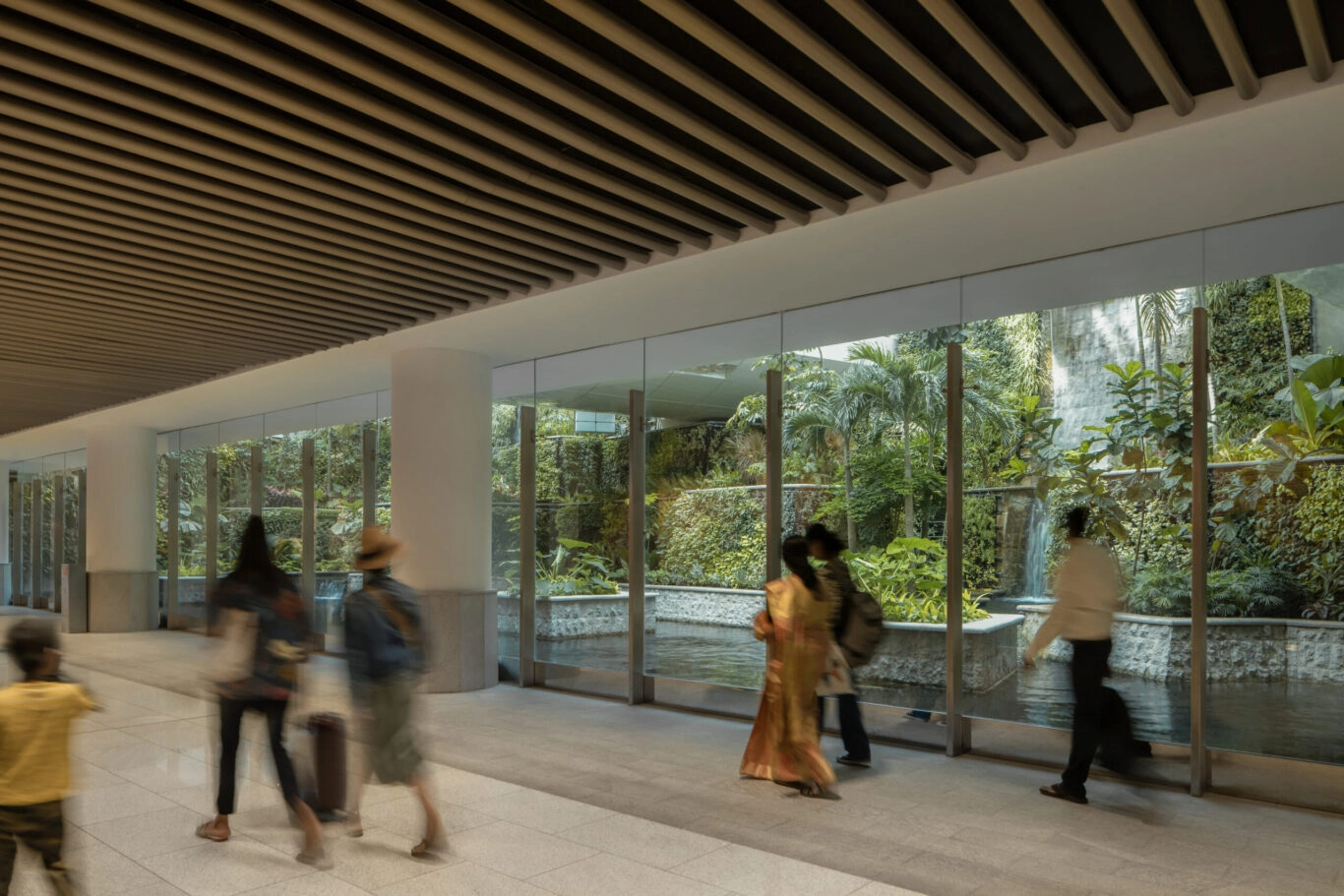
Ambitious sustainability goals
Sustainability and wellness were critical considerations at each stage of the design process for Kempegowda International Airport, and the terminal’s garden design supports the project’s sustainability goals. BLR is the largest airport building in the world to have been pre-certified as a LEED Platinum building prior to commencing operations.
Beyond the gardens that define the experience of the airport, Terminal 2 implements sophisticated, holistic, sustainable design strategies that enable the facility to run entirely on renewable energy. These strategies include extensive solar sharing and intelligent building systems, as well as the use of renewable materials. The abundant vegetation is irrigated with rainwater that is harvested on-site, and the retail area’s waterfalls cool the inside temperature.
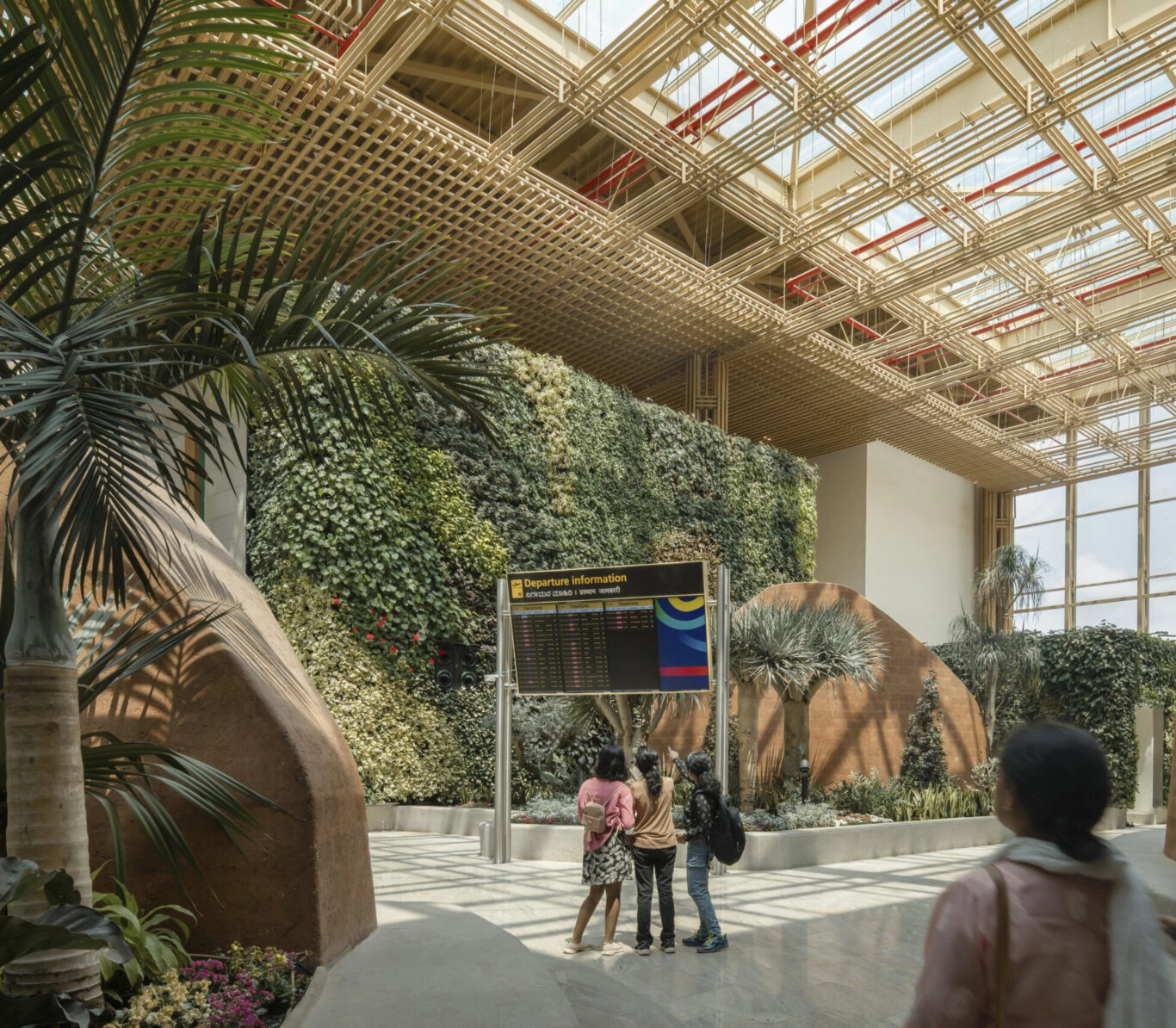
Engineered for efficiency and adaptability
SOM’s structural engineering team collaborated with the architecture and planning teams to create a terminal design that is efficient, adaptable, and sustainable. The terminal’s structural system and rectilinear form accommodate continuous landscaping, which spans multiple levels both inside and outside, as well as the use of skylights and hanging planters. The Kempegowda International Airport’s terminal’s roof is made entirely out of domestically produced materials and built with local construction technology. The structural system for the gate areas consists of long-span trusses, which are designed to keep walkways and sightlines clear.
The structure will accommodate changes over time–an important consideration in the ever-evolving aviation industry. All the gates are equipped with “swing” capacity or the flexibility to handle different wide-body and narrow-body aircraft. This forward-looking plan will allow the terminal to thrive as an international travel destination well into the future and will allow the airport to increase its annual passenger capacity by another 20 million passengers in the coming years.
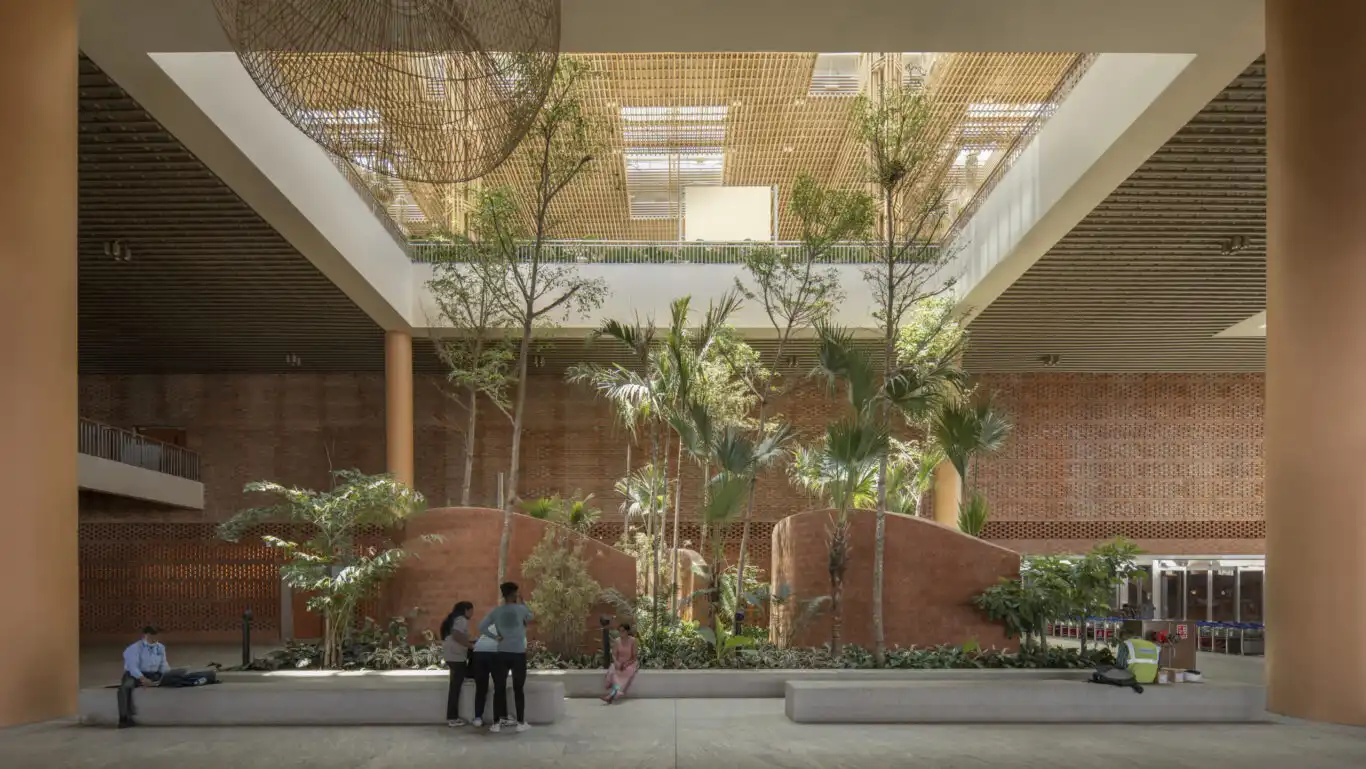
Ar. Ekansh Goel © Studio Recall
Kempegowda International Airport Project Details
Architect: SOM
Project Type: Government
Location: Bengaluru, India
Awards: 2024 ARCHITECT Architecture & Interiors Awards
Status: Built
Completion Year: 2023
Size: 380,000 sq. meters
The project description is provided by SOM.



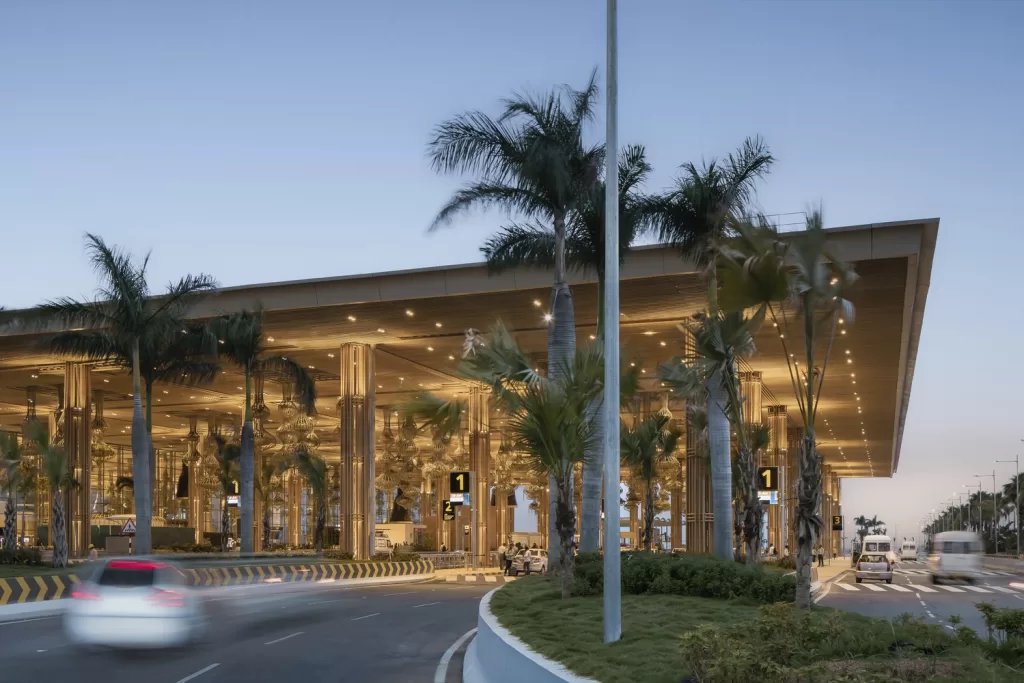
















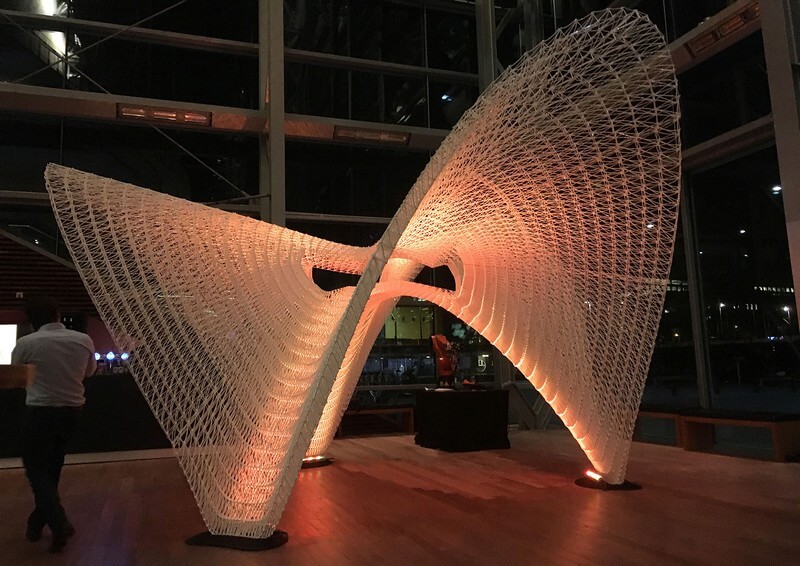
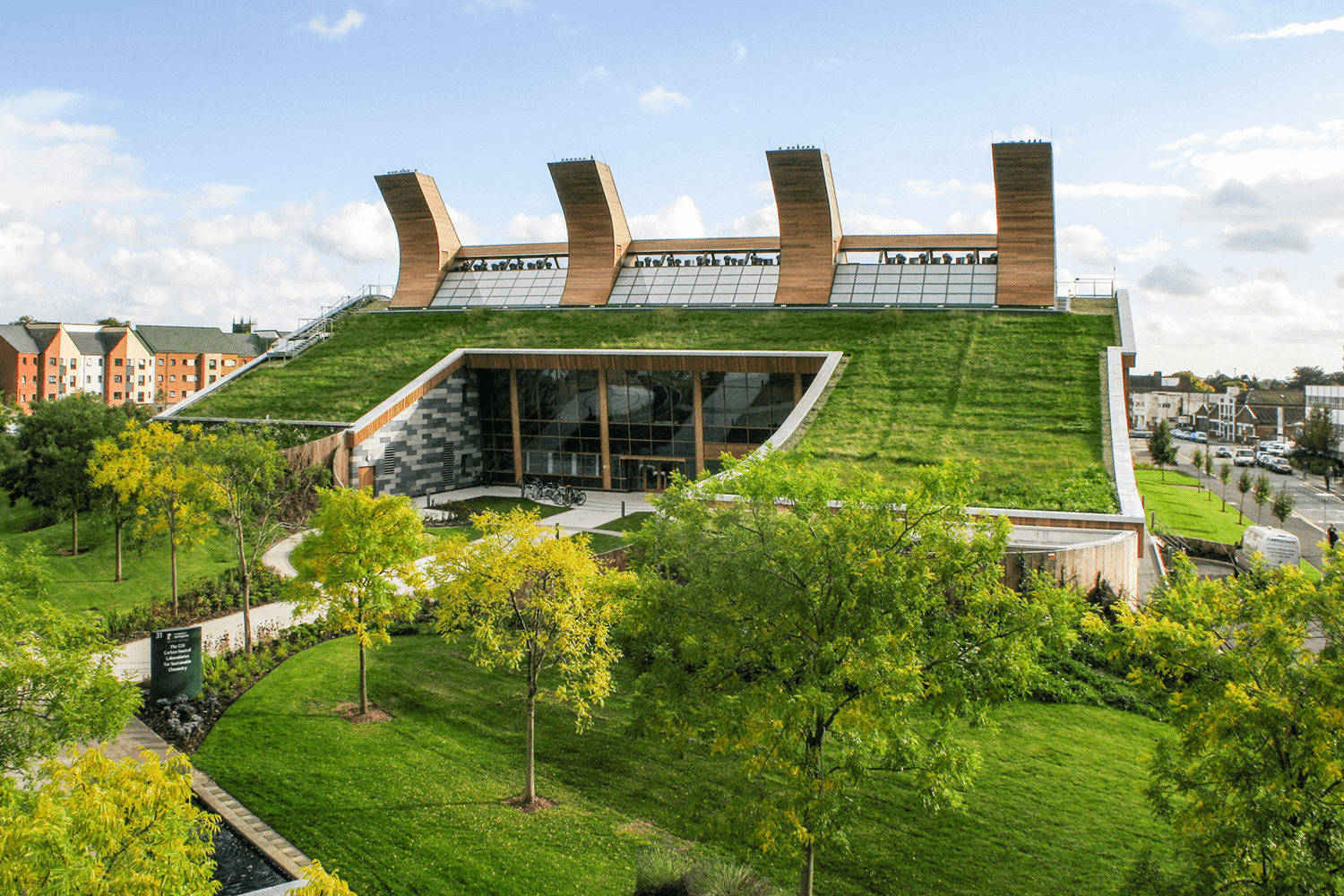

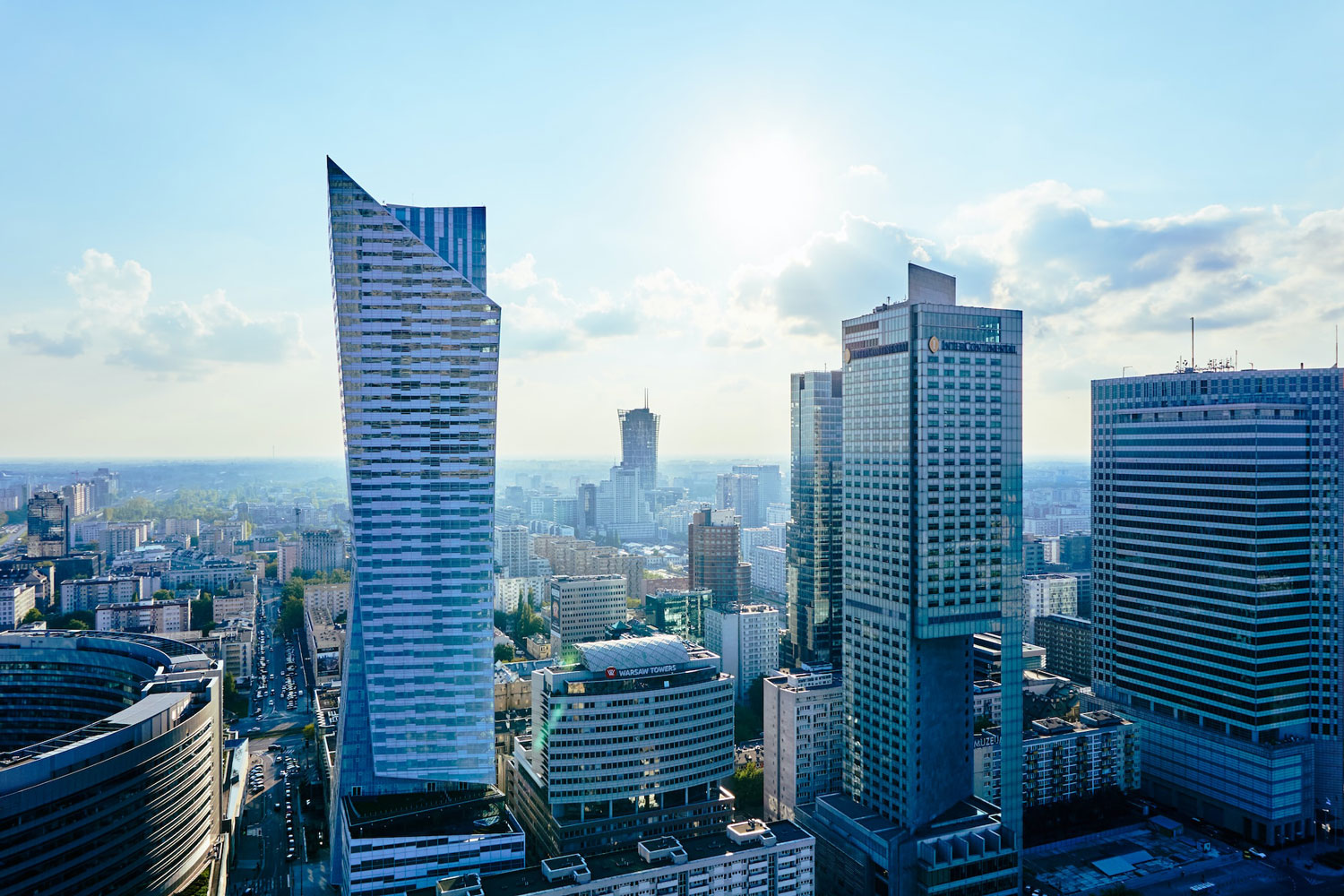








Leave a comment